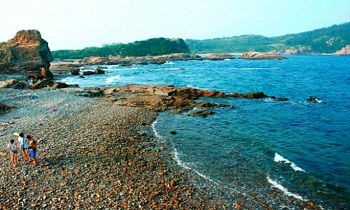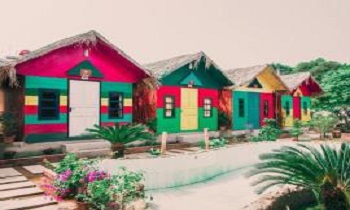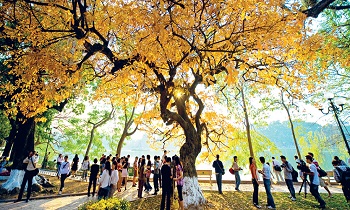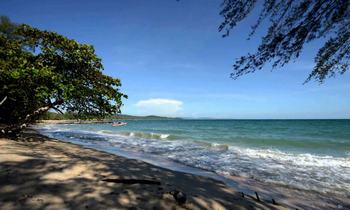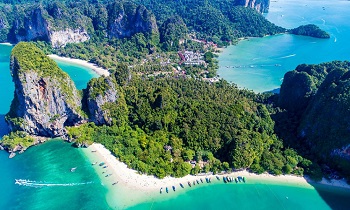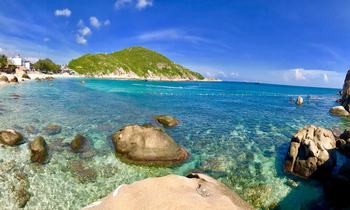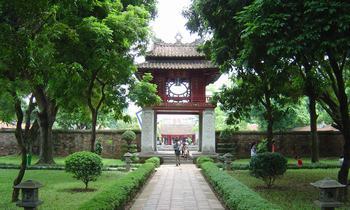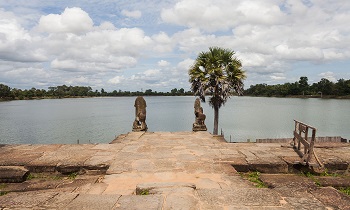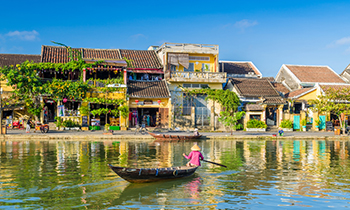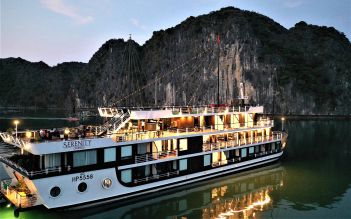
Admiring the Magnificent Beauty of Phnom Penh Royal Palace
In Cambodia travel tours, let’s drop in one of the most attractive tourist spots of this multicultural country - The Royal Palace. It is largely considered as a jewel in the heart of Phnom Penh, a combination of a variety of solid works including high towers. The Palace is an unmistakable style of the country.
The Palace is where the king and the royal members live and perform important national ceremonies. The works in the Palace are elaborately decorated with exquisite patterns, accompanied by beautiful flower gardens that adorn the beauty of Royal Palace, making it an unforgettable destination for many travelers in Cambodia - the country of pagodas.
History of the Palace
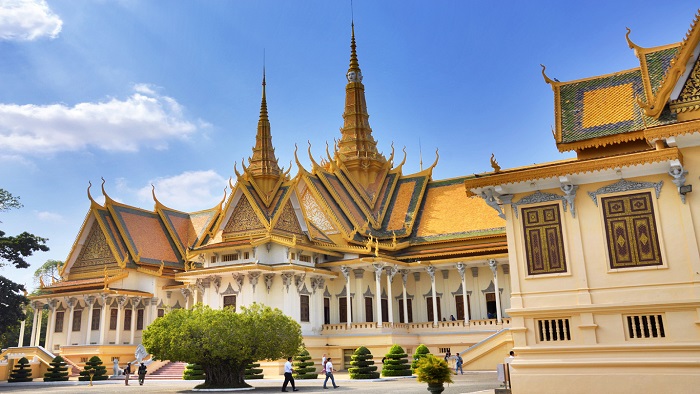
Admiring the Magnificent Beauty of Phnom Penh Royal Palace
Royal Palace of Cambodia was built in 1866, fully named in the Khmer language as Preah Barom Reachea Vaeng Chaktomuk. By 1871, the Palace was completely built. However, until 1873 when the surrounding wall was built, the whole works were officially completed.
Several years later, some other works were continuously constructed or reconstructed such as Chanchhaya Pavilion and Throne Hall.
Structure and Architecture of the Palace
The Royal Palace of Cambodia with its combination of many splendid buildings is located in the heart of Phnom Penh. The entire buildings are separated from the road outside by a wall with many unique sculptures. Today, except for the royal residence at Khemarin Palace, other places in the Royal Palace and Silver Pagoda are open to visitors. The main entrance to the Royal Palace is located on Sothearos street.
The Cambodian Royal Palace has a lot of works designed magnificently and majestically with many ingenious motifs and patterns which express the cultural richness of Cambodia.
Silver Pagoda
Silver Pagoda is officially named Wat Preah Keo Morokat, meaning "Emerald Buddha Temple". The pagoda was paved with 5,000 pieces of silver, each weighing one kilogram. The temple was built in 1892 under King Norodom in the style of the Jade Buddha Temple of Thailand and was restored in 1962.

Admiring the Magnificent Beauty of Phnom Penh Royal Palace
Throne Hall
Throne Hall is the place where the king and the magnate carry out their duties. This building was first built completely of wood in 1869 and completed in 1870 under King Norodom. By the time of King Sisowath, he destroyed Throne Hall in 1915 and then rebuilt it in 1917 and completed in 1919, which is the current one.
The Throne Hall is 1,800 square meters wide and 59 meters high which was built in the east, so during the morning sunrise, it looks very bright. The throne is placed in the middle of the room and used in the coronation of the King. The Throne Hall room is decorated with the unique and artistic expression of the legend of Khmer.
Chanchhaya Pavilion
Chanchhaya Pavilion was also built twice. It was first built of wood under the reign of King Norodom, and then in 1913, the work was reconstructed by King Sisowath. The Chanchhaya is also known as the Bright dance hall, where the royal dances are performed and also is a place for the King to deliver his speech to the people.
Napoleon III Pavilion
Considered to be a different work from the Khmer-style buildings around, the Pavilion was in fact the first ageless building in the Royal Palace which was built entirely of iron. It is a unique work for Queen Eugenie of France - wife of King Napoleon III used in the inauguration of the Suez Canal in 1869.
In 1876, the Pavilion was sent back to King Norodom. In 1991, it was restored with financial assistance from the French government. This building is now used as a small museum, displaying photographs of memorable royal events. However, it is not open for travelers to visit inside but to admire from outside.
Hor Samran Phirun
Hor Samran Phirun was built in 1917 as the resting place of the King and also the place for him to wait for elephant rides during the royal festivals. Today, it is used to store musical instruments, performing tools, and presentations of gifts from the world leaders presenting to the King and the Cambodian Royal.
Hor Samrith Phimean
Built in 1917, Hor Samrith Phimean was a place to display the royal costumes and emblems, which now displays the costumes of the Kings, Queens, cups, and palace maid's costumes, etc.
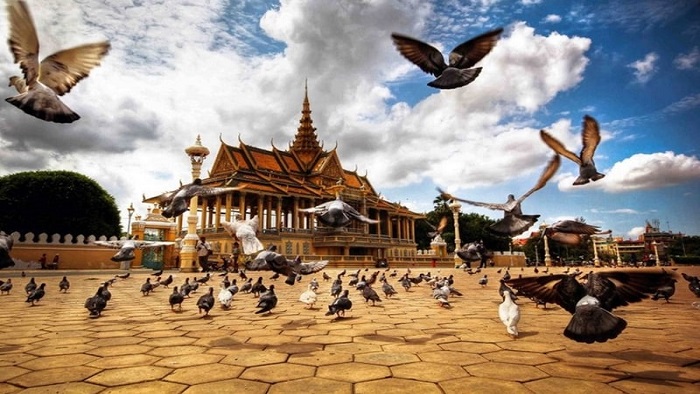
Admiring the Magnificent Beauty of Phnom Penh Royal Palace
Flower Garden
It can be said that the Royal Palace garden is a collection of many precious and beautiful plants, attracting visitors thanks to the carefully and thoroughly attention. From the entrance, there are various Sala trees - a kind of tree of Shakyamuni Buddha. The inner area is home of the centuries-of-year-old trees like Chinese Banyan.
Some Notices in Royal Palace
-
The Cambodian people extremely honor the king, queen, and royal members. Therefore, you should express your respect for the Cambodian royal family.
-
When visiting the Royal Palace, you should dress up discreetly and politely, do not wear shorts and slippers. Women should not wear short skirts or thin clothes to avoid being not allowed to visit the Palace.
-
Do not take photos of objects and works in the Royal Palace without permission.
-
When visiting the pagodas, you should show respect for the Buddha statues. Not only touching the Buddha statues but also actions of insulting the faith here may be imprisoned even with cases of foreign visitors.
-
In the sanctuary, you should not laugh or talk too loudly.
-
When traveling in Cambodia, you should listen carefully and follow the instructions of the guides to limit those risks.
Tourists can meet a variety of Buddhist statues in the Royal Palace
Thanks to the unique, gorgeous works and the meaningful values, Phnom Penh Royal Palace has placed an important role in the development of tours Cambodia in particular and Asia tours in general. If this is useful for you, please like and share with others. Thank you.

